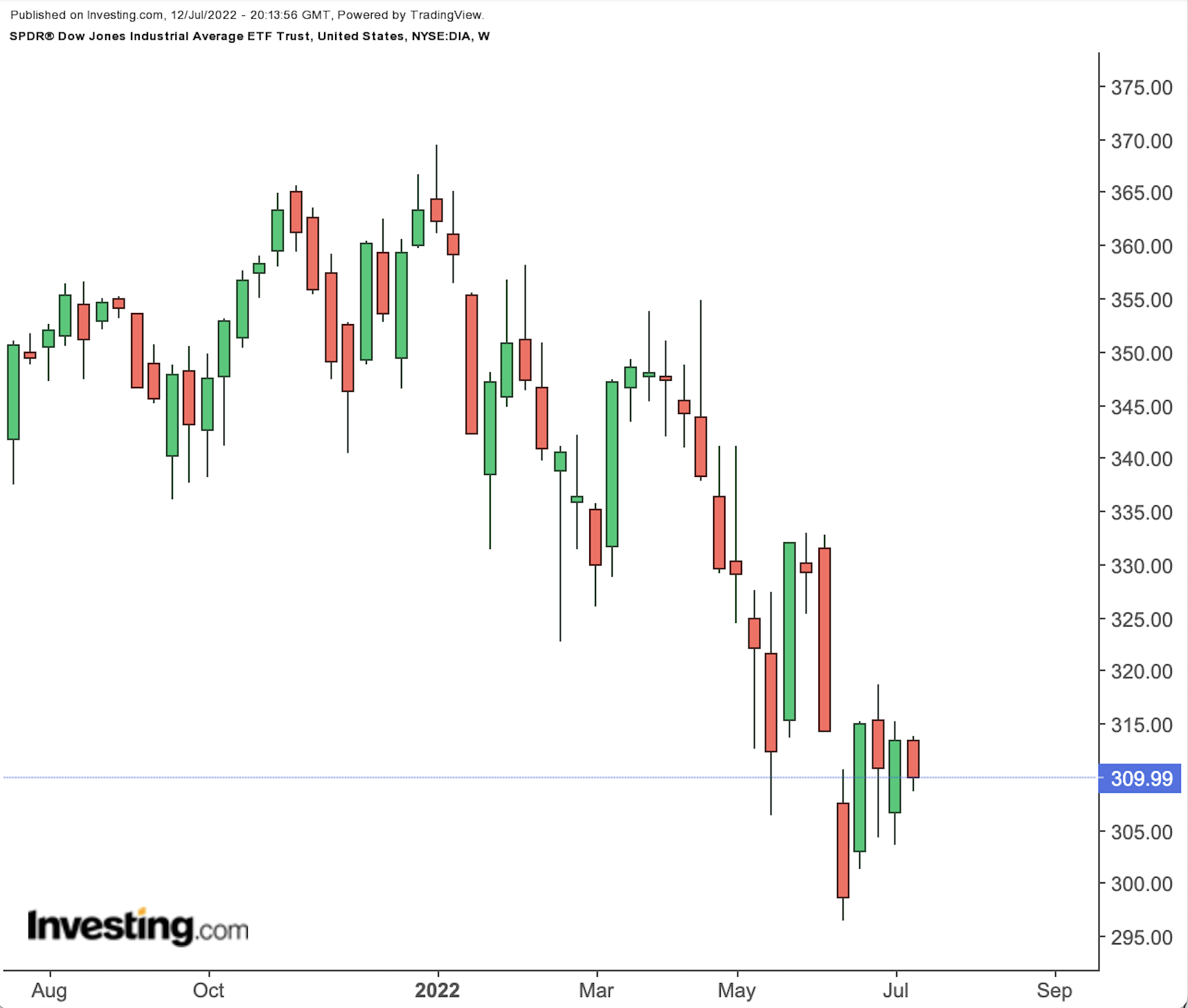Novo Nordisk, Eli Lilly fall after Trump comments on weight loss drug pricing
- Equities and other assets entered bear territory in first half of 2022
- Company earnings now in focus
- ETFs help long-term investors create diversified portfolios at relatively low cost
The first six months of 2022 were full of challenges for the broad market, from soaring inflation to recession fears, geopolitical concerns and even a cratering crypto market. Investors are increasingly concerned as stocks delivered their worst returns in decades.
Analysts now concur there is a bear market in many assets. A bear market occurs “when a broad market index falls by 20% or more over at least a two-month period,” highlights the U.S. Securities and Exchange Commission.
As we write, the S&P 500 is down more than 19% so far this year. By comparison, the Dow Jones Industrial Average has declined around 14.5% and the heavy-tech NASDAQ 100 has plunged almost 28%.
Meanwhile, although a few commodities, particularly oil and natural gas, are among the best performers this year, others have offset some of the gains in this asset class. For example, copper, typically considered an economic bellwether, has dropped more than 23% in 2022, and cotton has slumped roughly 17.5%.
Cryptocurrencies have also suffered a brutal sell-off. Bitcoin has lost more than half of its value since January. Meanwhile Ethereum has plummeted by about 70%. Blockchain and crypto miner stocks that are regarded as indirect plays in the crypto space have also suffered significantly.
Fixed income securities are also struggling to find an equilibrium this year amid red-hot inflation and interest rate hikes by global central banks, including the Federal Reserve. For instance, the S&P 500 Bond Index, which measures “the performance of U.S. corporate debt,” lost 13% this year. The S&P International Corporate Bond Index has declined 21%.
Worries Shift From Inflation To Recession
Clearly, investors have been in a risk-off mood in the first half of the year. Meanwhile, the Fed suggests it will continue to increase interest rates to tame inflation. Economists debate whether the central bank’s aggressive steps could lead to a recession in the second half of the year.
After all, some of the biggest bear markets on Wall Street coincided with the Great Depression between 1929 and 1939 and the Great Recession of 2008/09. In early June, the World Bank slashed its global growth forecast and warned that many countries could fall into a recession.
Several factors create and sustain a bear market, like investor sentiment, interest rates and macro-economic developments. Thus, predicting how long the current bear market will last is difficult.
According to investment research firm CFRA, “of the 13 bear markets since1946, the return to break-even levels has varied, taking as little as three months to as long as 69 months.” The S&P 500 has fallen by an average of 32.7% in these 13 bear markets, including a roughly 57% drop during the 2007-2009 bear market.
Given the current economic downturn and shaky outlook, individuals are searching for investment vehicles to safeguard their portfolios in these choppy waters. That said, readers may also want to know that there is one thing all bear markets have had in common: no matter how far the index fell or how long the downturn lasted, all losses were eventually erased by a new bull market.
According to LPL Research, “a year after the S&P 500 moves into a bear, stocks actually do pretty well, up an average of nearly 15% a year later with a very solid median gain of 23.8%.”
We also believe the current market offers a strong entry opportunity to generate future wealth by investing in broad, low-cost funds. With that information, let's examine one of the most popular ETFs to participate in the bull market that will eventually follow the current bear market. It may be a first step in creating a diversified portfolio at relatively low cost without having to pick individual stocks as the earnings season gets started.
SPDR Dow Jones Industrial Average ETF Trust
Current Price: $310
52-Week Range: $296.39 - $369.50
Dividend Yield: 1.97%
Expense Ratio: 0.16% per year
The SPDR® Dow Jones Industrial Average ETF Trust (NYSE:DIA) invests in 30 blue-chip U.S. stocks. They are industry titans with a proven record of weathering economic storms and surviving recessions. The fund started trading in January 1998.

Source: Investing.com
DIA tracks the returns of the Dow Jones Industrial Average, the oldest continuous barometer of the U.S. stock market. This price-weighted index is one of the most widely quoted benchmark indices on Wall Street.
The top 10 holdings in the fund’s portfolio account for more than half of $26.8 billion in net assets. They include UnitedHealth (NYSE:UNH), Goldman Sachs (NYSE:GS), Home Depot (NYSE:HD), Microsoft (NASDAQ:MSFT) and McDonald’s (NYSE:MCD). These are companies with wide moats, solid earnings and stable cash flows.
In terms of sectoral exposure, we see health care (21.93%), information technology (21.36%), financials (15.12%), consumer discretionary (13.63%) and industrials (12.98%), among others.
DIA hit a record high in the early days of January. But it has declined roughly 14% YTD and 10.8% over the past 12 months. Trailing price-to-earnings (P/E) and price-to-book (P/B) ratios stand at 16.11x and 3.53x, respectively.
Having hit a 52-week low on June 17, DIA has shown it is not immune to broad market volatility. Yet, the fund remains a solid choice for retail investors looking to diversify their investment portfolios with large-cap U.S. equities. Long-term investors could consider buying DIA around these levels.
Disclosure: The writer doesn’t own shares of assets mentioned.
